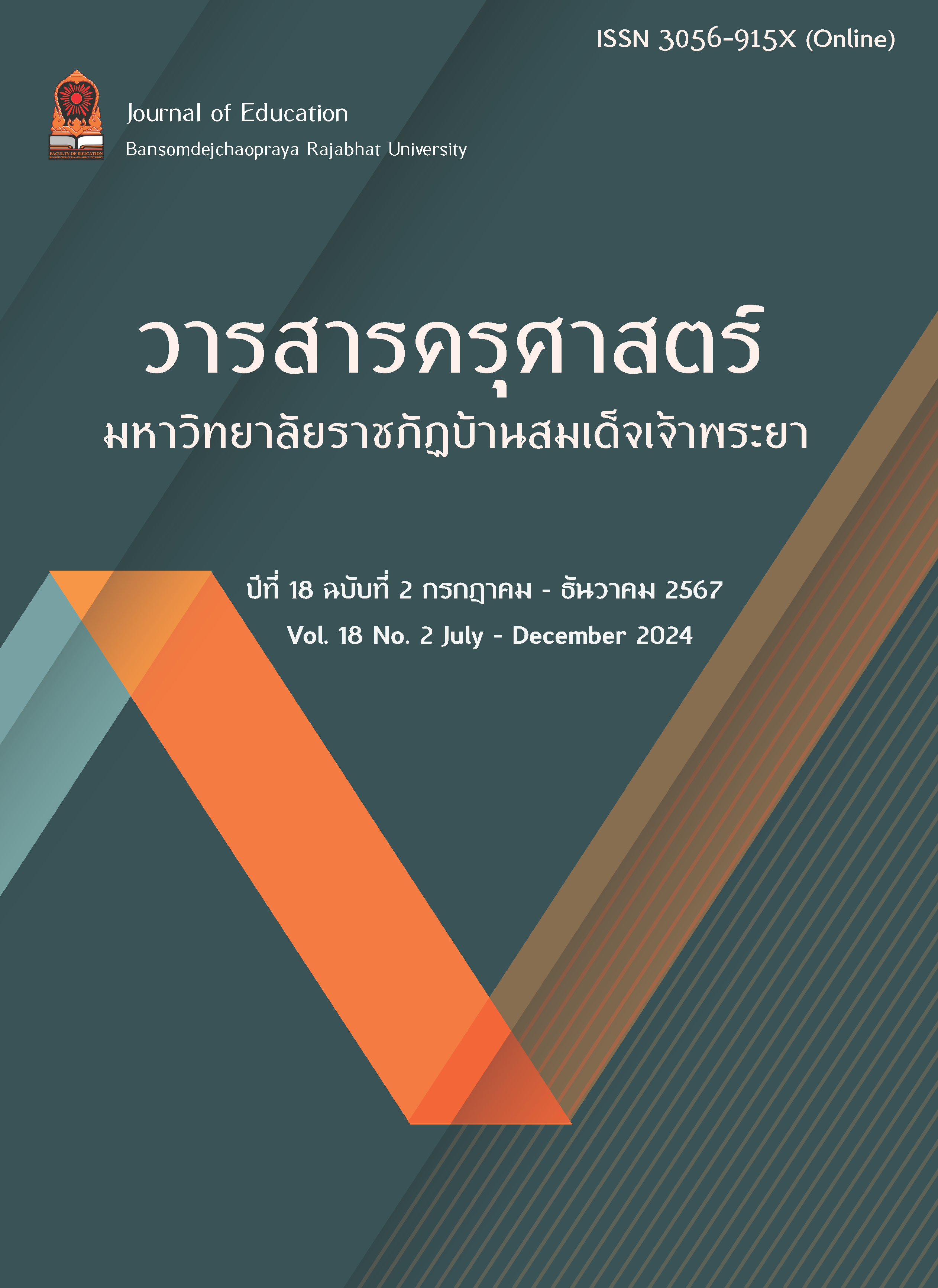Use of Participative Learning enhance English Reading Abilities of Second Year Students, Lampang Rajabhat University, Muang District, Lampang Province
Keywords:
Participative Learning, English reading abilityAbstract
The purposes of this research were to compare and examine the English reading ability of second-year students before and after learning through Participative Learning. The target group consisted of 23 second-year students enrolled in Critical Reading for Teachers of English (1091306) at Lampang Rajabhat University, Maung District, Lampang Province, during the first semester of the academic year 2021. The study utilized 6 lesson plans designed with Participative Learning as the experimental tool. The data collection instrument was a reading ability test, which was validated for content validity using the Index of Item-Objective Congruence (IOC) by three experts, with an average IOC score of 0.88. Data analysis was performed using mean, percentage, and standard deviation.
The results showed that the students' English reading ability significantly improved, progressing from a moderate level to a very good level after the intervention. The study found that Participative Learning not only enhanced students' reading abilities but also contributed to their overall learning skills and self-development. It promoted critical thinking, deeper engagement with the content, and more effective collaboration among peers. Furthermore, Participative Learning facilitated the application of knowledge in real-life contexts, thus preparing students for lifelong learning. This approach also fostered empathy, mutual support, and a better understanding of individual roles and responsibilities, which are essential for personal growth and adaptability in both academic and social settings. In conclusion, Participative Learning proved to be an effective approach in improving English reading skills and fostering essential life skills, allowing students to apply what they learned both inside and outside the classroom. The findings suggest that this teaching method can contribute significantly to students' academic performance and personal settings.
Downloads
References
กรมวิชาการ. (2544). หลักสูตรการศึกษาขั้นพื้นฐาน พุทธศักราช 2544. กรุงเทพฯ: องค์การรับส่งสินค้าและพัสดุภัณฑ์.
ทิศนา แขมมณี. (2548). ศาสตร์การสอน: องค์ความรู้เพื่อการจัดกระบวนการเรียนรู้ที่มีประสิทธิภาพ (พิมพ์ครั้งที่ 4). กรุงเทพฯ: บริษัทด่านสุทธาการพิมพ์ จำกัด.
บรรชร กล้าหาญ, และ รุ่งทิพย์ กล้าหาญ. (2543). รายงานการวิจัยเรื่องการเรียนรู้แบบมีส่วนร่วมเพื่อทักษะชีวิตด้านสารเสพติดของนักศึกษาอาชีวเกษตร (รายงานการวิจัย). กรุงเทพมหานคร: คณะกรรมการวิจัยการศึกษา กรมการศาสนาและวัฒนธรรม กระทรวงศึกษาธิการ.
เบญจมาศ อยู่เป็นแก้ว. (2548). การสอนแบบบูรณาการ. กรุงเทพฯ: ภาพพิมพ์.
พรพิมล ประสงค์พร. (2557). การเสริมสร้างสมรรถนะของครูในการจัดการเรียนการสอนภาษาอังกฤษ ตามแนวคิดการจัดการเรียนรู้แบบบูรณาการเนื้อหาและภาษา (CLIL). วารสารศึกษาศาสตร์ มหาวิทยาลัยขอนแก่น, 37(3), 81-88.
สมใจ ปราบพล. (2544). การจัดกระบวนการเรียนรู้ที่เน้นผู้เรียนเป็นสำคัญในการสอนแบบทักษะชีวิตแบบมีส่วนร่วม. สำนักงานคณะกรรมการการศึกษาแห่งชาติ.
ฉัตรปวีณ อำภา. (2555). การสังเคราะห์งานวิจัยเกี่ยวข้องกับการสอนอ่านภาษาอังกฤษระดับมัธยมศึกษา (วิทยานิพนธ์ปริญญาศึกษาศาสตรมหาบัณฑิต สาขาวิชาการสอนภาษาอังกฤษในฐานะภาษาต่างประเทศ). ภาควิชาหลักสูตรและวิธีสอนบัณฑิตวิทยาลัย มหาวิทยาลัยศิลปากร.
อัจฉรา วงศ์โสธร. (2544). การทดสอบและประเมินผลการเรียนการสอนภาษาอังกฤษ. กรุงเทพฯ.
Anderson, L. W., & Krathwohl, D. (Eds.). (2001). A taxonomy for learning, teaching, and assessing: A revision of Bloom’s taxonomy of educational objectives (Complete Edition). New York: Longman.
Derchant, E. V. (1982). Improving the teaching of reading. Englewood Cliffs, NJ: Prentice-Hall, Inc.
Syrja, R. C. (2011). How to reach and teach English language learners: Practical strategies to ensure success. Jossey-Bass Teacher.
Williams, J. L. (1986). The behavioral and the mystical: Reflections on behaviorism and Eastern thought. The Behavior Analyst, 9(2), 167-173.
Downloads
Published
How to Cite
Issue
Section
License
Copyright (c) 2024 Faculty of Educaion Bansomdejchaopraya Rajabhat University

This work is licensed under a Creative Commons Attribution-NonCommercial-NoDerivatives 4.0 International License.
บทความที่ได้รับการตีพิมพ์เป็นลิขสิทธิ์ของคณะครุศาสตร์ มหาวิทยาลัยราชภัฏบ้านสมเด็จเจ้าพระยา
ข้อความที่ปรากฏในบทความแต่ละเรื่องในวารสารวิชาการเล่มนี้เป็นความคิดเห็นส่วนตัวของผู้เขียนแต่ละท่านไม่เกี่ยวข้องกับมหาวิทยาลัยราชภัฏบ้านสมเด็จเจ้าพระยา และคณาจารย์ท่านอื่นๆในมหาวิทยาลัยฯ แต่อย่างใด ความรับผิดชอบองค์ประกอบทั้งหมดของบทความแต่ละเรื่องเป็นของผู้เขียนแต่ละท่าน หากมีความผิดพลาดใดๆ ผู้เขียนแต่ละท่านจะรับผิดชอบบทความของตนเอง



